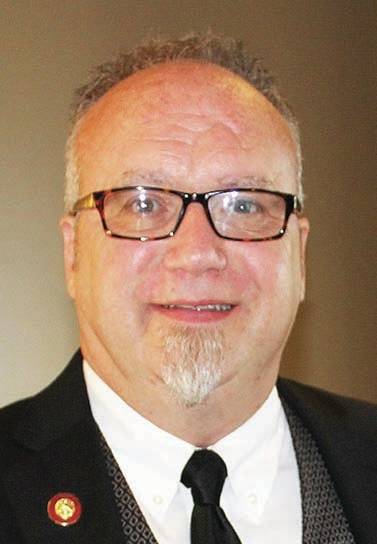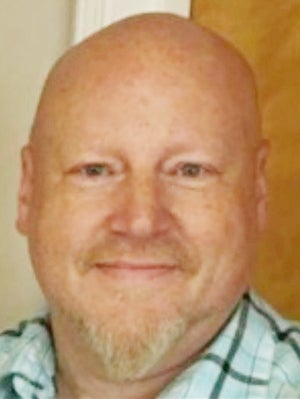Collateral damage: Children in war zones
Published 6:30 am Saturday, October 5, 2019
By Vivian Blevins
Columnist
As a person who has interviewed 100 plus veterans, it’s part of my responsibility to remind myself and others that very infrequently are children transported out of war zones as they were in London during World War II. Children are a part of the collateral damage of war.
Korean War veteran — yes, it surely felt like a war to those who served — Don Earnest, 86, of Tipp City, Ohio, still grieves as the images of starving, homeless Korean children with ragged clothing and missing limbs come into his consciousness, refusing to leave. These images are a part of the collateral damage he also has as a result of a war that ended in 1953, certainly not a “forgotten war” from his perspective.
Weldon Oakley, 87, of Sidney, Ohio, remembers those Korean children, too. As a combat engineer in the Korean War, he drove on dirt roads through villages where orphans, some playing, some crying, had nothing to eat. When the children saw his platoon coming, they would, shout, “GI! GI! ” and be rewarded with C-rations, gum, and candy. Oakley reports, “What really got me was the near absence of parents. At times in winter, we’d blow up ice on the river to build pontoon bridges, and the few adults would appear and run out in that icy water to retrieve the dead fish.”
Army veteran Taylor Somers, 29, is a business and engineering student at Edison State Community College; a graduate pf Northmont High school in Clayton, Ohio; and an operations coordinator at a plant in Greenville, Ohio. Somers is married and the father of June, 2. Somers says, “I joined the army because I felt it would give me purpose, pride, so I could be a part of something bigger than myself.”
His service took him to Fort Knox, Kentucky, for basic training and then to Iraq where he served as a Humvee driver, a gunner (240-Bs), and a dismounter (a soldier who leaves the vehicle and patrols on foot).
Somers then went to Fort Hood, Texas, where he trained as a scout. He qualified as “Expert” on the M-4 rifle and as a gunner on 50- caliber machine guns mounted on Stryker vehicles. He also learned routes as part of his work in reconnaissance – to classify them according to their dimensions and weight capacity. IED (improvised explosive device) identification had been a part of his basic training at Fort Knox, along with knowing which devices were BIP (blow up in place) and which ones, following identification, required a call up for a special crew to come and dismantle.
Somer’s next stop was Germany followed by a nine-month deployment with a platoon of 20 U.S. Army scouts in 2013-2014 to Kandahar Province , Afghanistan. Their mission was three-fold: to scout, obviously; to provide reconnaissance; and to take action to deny the Taliban entrance into the terrain. They had been there six months when a life-threatening event occurred.
His mother regularly sent him candy, lots of candy. Somers says, “We had been warned to stay away from children as they were a possible threat no matter how cute they were. In spite of the warnings, we made friends with a group of five kids, siblings, ages 5 to 10 years old with one shy girl and a boy named Abdul Hajir. Abdul had a physical disability that made it difficult for him to control his facial muscles and his limbs.”
What the platoon noticed was when they gave candy to the children, the able-bodied boys would push Abdul down and take his candy. The scouts decided on a brilliant strategy: Give all the candy to Abdul and let him distribute it.
Abdul liked this, and the solution worked.
One evening there was an 8 p.m.. curfew in the area where Abdul and his family lived in a mud hut with dirt floors and no roof. Curfew meant they were not to be outside that night.
Somers and members of his platoon were patrolling the area in their Strykers at about 1 a.m. when their NOD (thermal night optical observation device) indicated someone was running in the street and waving his arms. It was Abdul, limping about in the street and shouting, “Boom! Boom!”
Their translator asked Abdul , “Where? What’s going on?”
Somers indicates, “The Taliban had placed a couple of IEDs and personnel mines in the exact spot where I always parked my truck. The devices were meant for me.”
He continues, “Taliban don’t take kindly to other Afghans who help us. They torture and kill those who do. Abdul risked his life and his family’s life for me.”
Somers called the area EOD ( Explosive Ordinance Disposal) unit to come disarm the devices, and 12 hours later they arrived at Somers’ position. He says, “During that time, we couldn’t move an inch. They took care of the problem, and we went back to the base.”
In the days that followed, the platoon gave Abdul’s family clothes, hats, shoes — even sunglasses.
Somers says, “You know, there’s no mail service there, but I’d like to write Abdul and thank him. I have a picture of him. That kid saved my life. ”
Dr. Vivian Blevins is a Harlan County native. She has taught undergraduate and graduate students as well as prison inmates, and now teaches communication and American literature classes at Edison State Community College in Ohio. Reach her at vbblevins@woh.rr.com.





